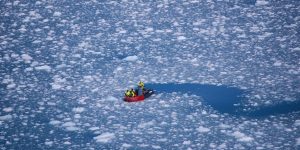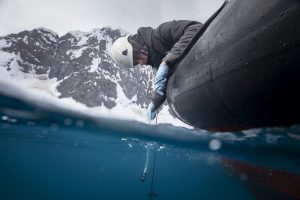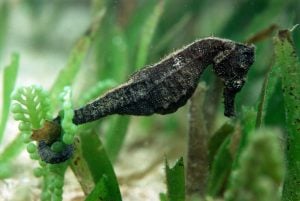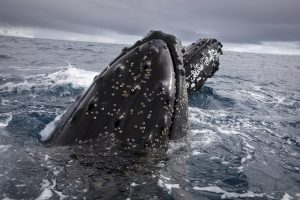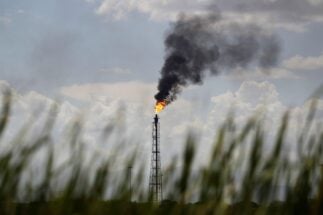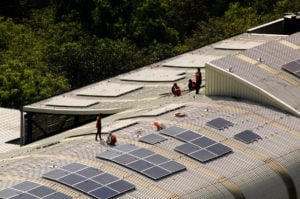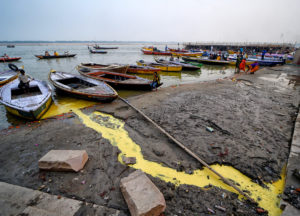Climate protection and ocean conservation are getting increasing attention, and the links between the two are being taken more seriously during international processes. At the Glasgow Climate Conference, leaders announced their ocean actions, including establishing marine reserves, as climate actions. Some countries have put the “blue economy” and coastal adaptation to climate change into their Nationally Determined Contributions (NDCs) to keeping warming within Paris Agreement levels.
The Glasgow Climate Pact marks the first time ocean issues have been formally included in UN climate processes. In its own words, the pact “invites the relevant work programmes and constituted bodies under the UNFCCC [UN Framework Convention on Climate Change] to consider how to integrate and strengthen ocean-based action in their existing mandates and workplans and to report on these activities within the existing reporting processes.”
This is hardly the first time the link between the climate and the ocean has been recognised. Some ocean management bodies are already considering climate change when setting policy, with the Commission for the Conservation of Antarctic Marine Living Resources (CCAMLR) a pioneer.
The climate change threat to marine life in Antarctica
CCAMLR, one part of the Antarctic Treaty system, is an international organisation founded in 1982 to steward Antarctica’s marine , mainly by managing fisheries. Specifically, it applies “to the Antarctic marine living resources of the area south of 60° South latitude…. and of the area between that latitude and the Antarctic Convergence.”
CCAMLR’s work is carried out in accordance with the 1980 Convention for the Conservation of Antarctic Marine Living Resources. In Article 2 of that document, a section on conservation principles includes the “prevention of changes or minimisation of the risk of changes in the marine ecosystem which are not potentially reversible over two or three decades.” That means not just preventing clear cause-and-effect threats, but also potential future threats. And there is no doubt that climate change is one of the major threats faced by Antarctic ecosystems.
Climate change could cause changes in the size of individual creatures, overall biomass (through changes in population size, spawning rates and disease); and distribution (as species shift to waters with more suitable temperatures, or are forced to move due to shifting competitors or predators).
These impacts aren’t yet significant in the Antarctic’s two main fisheries – krill and toothfish. But research shows they will worsen as climate change intensifies.
In 2013, scientists from the Australian Antarctic Division, working in the laboratory to study krill breeding during ocean acidification, found that when carbon dioxide in the water reaches 1750μatm, more than four times normal levels, krill breeding plummets. The researchers predict that, under a business-as-usual scenario, by 2100 krill hatch rates will have dropped 20%. That will affect population sizes.
The Antarctic toothfish, one of two toothfish species found in these waters, is under even greater threat. Research carried out in 2008 by the University of British Columbia predicted moderately warmer oceans would cause the range of the Antarctic toothfish to shrink as the ice shelf retreats. In an extreme warming scenario, that range would drastically reduce, with a risk of extinction in a matter of decades.
Including the climate in Southern Ocean conservation policy
Against this background, CCAMLR started discussing climate change relatively early and has kept up to date with research, gradually including climate considerations in its policy-making framework. As all CCAMLR policies are first discussed and given scientific backing by its Scientific Committee before being passed to the commission itself, that process has gone through three stages.
The first stage involved agenda setting. In 2000, CCAMLR noted that the International Science Council had carried out a study into the vulnerability to climate change of Antarctica’s mainland and freshwater ecosystems, which could be relevant to its own Ecosystem Monitoring Programme. Cooperation between the Council and the Programme benefited both. In 2005, climate change entered the agenda of the CCAMLR Scientific Committee intersessional working group meetings. Two years later, it became an official agenda item of the Committee. In 2015, climate change became an independent agenda item for the CCAMLR meeting, which is where decisions are made and policy is set.
That led to the second stage: some CCAMLR measures started to feature climate change goals, for example during the establishment of protected areas and the management of krill stocks.
Establishing nature reserves can improve the ability of ecosystems to adapt to and recover from climate change. Also, less disturbed ecosystems can be used as reference for scientific research. In 2011, this was one of the stated aims in proposals for protected areas in the Ross Sea and East Antarctica. The Ross Sea “marine park” was created in 2016 and is the largest protected area in the world. Building resilience to climate change, and use in scientific research, are both stated objectives in the proposals for marine protected areas in the Weddell Sea and Western Antarctic Peninsula. These proposals were put forward in 2018 and 2017 respectively but CCAMLR member states have so far failed to agree on establishing them.
The Antarctic ice shelf, which has been affected by climate change, is also getting particular attention. In 2012, the UK proposed a protected area for the collapsing Larsen Ice Shelf. Negotiations led to time-limited protections under Conservation Measure 24-04 which was put in place in 2017.
Another example is “feedback management” of the krill fishery. In 2013, the chair of CCAMLR’s Scientific Committee proposed to “provide a short targeted presentation on the complex matter of feedback management, including considerations in respect of climate change, to be presented to the Commission in 2014”. The feedback management involves actively adjusting fishing activity according to information on the state of the ecosystem. In theory, if the data shows that krill and adjacent species on the food chain are doing well, krill fishing quotas can be increased. If that system is applied, climate change factors will need to be taken into account.
These changes in CCAMLR’s agenda and work have gradually reached a third stage: improving how decisions are made.
In 2014, the Antarctic and Southern Ocean Coalition, a CCAMLR observer, proposed that all CCAMLR documents and fisheries reports include, as far as possible, a statement on the impact of climate change, to provide adequate data for discussions and negotiations. Despite support from many countries, consensus was not reached and the proposal failed. The following year, discussions at the Antarctic Treaty’s Committee for Environmental Protection prompted the UK and Norway to resubmit the proposal. After years of talks, in 2018 that submission eventually became a proposal for a “Climate Change Response Work Program”, which would aim to establish a regular CCAMLR mechanism to promote the production, delivery and use of climate change information and proposals.
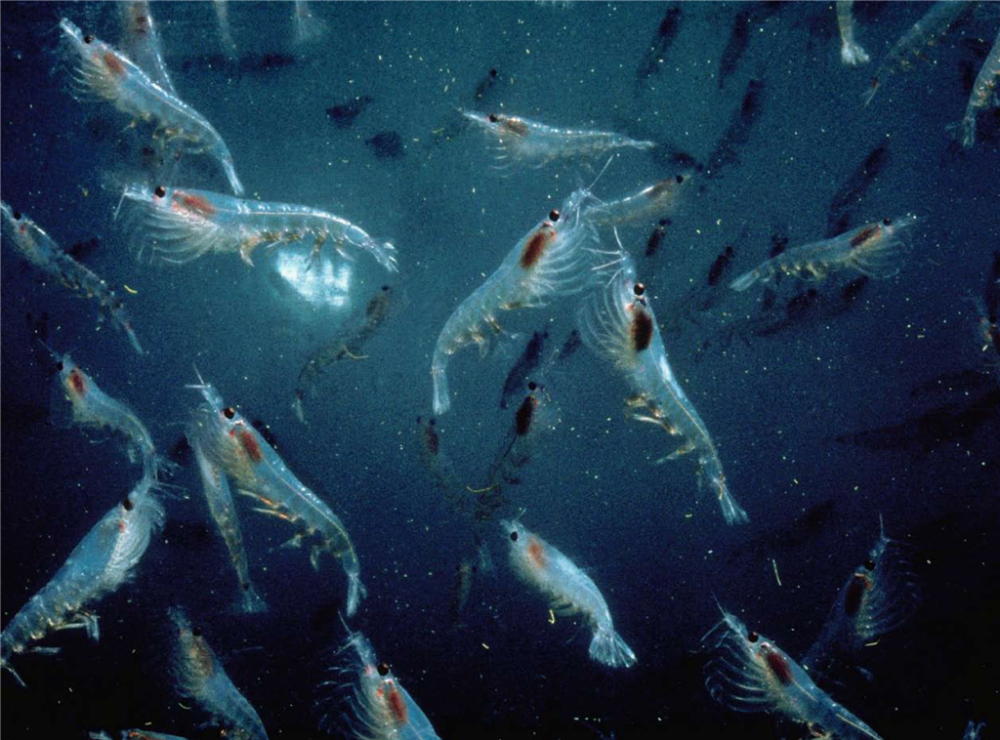
Specific issues to be addressed by the Program would include: using structural reforms and dialogue to strengthen consideration given to climate change; responding to the impact of climate change on in the Southern Ocean and its sustainable use; and protecting the habitats and species at risk from climate change and reducing the likelihood of invasive species appearing. However, opposition from certain countries meant this proposal has not yet passed.
Matters pending
CCAMLR is a step ahead of many other fishery management regimes, thanks to the support it has received. It is part of the Antarctic Treaty system, whose annual meetings are a key part of managing the region, and discussions of climate change there have spurred CCAMLR’s work. Civil society has also driven discussion of climate change, while the UK, Australia and Norway have been keener than other nations to see it on the official agenda.
Of course, we can also see opposition to consideration of climate change within decision-making processes. Should it be treated only as a scientific matter for reference, or should climate change factors be considered systematically in all decisions? Is there a need for a comprehensive framework for considering climate change, or can it be treated on a case-by-case basis when deciding on specific measures? Would these additional considerations create an unacceptable burden to fishing? None of these questions has been answered adequately.
With climate change and ocean conservation issues both coming to greater attention, those are three key issues all marine industrial policies will need to face.
